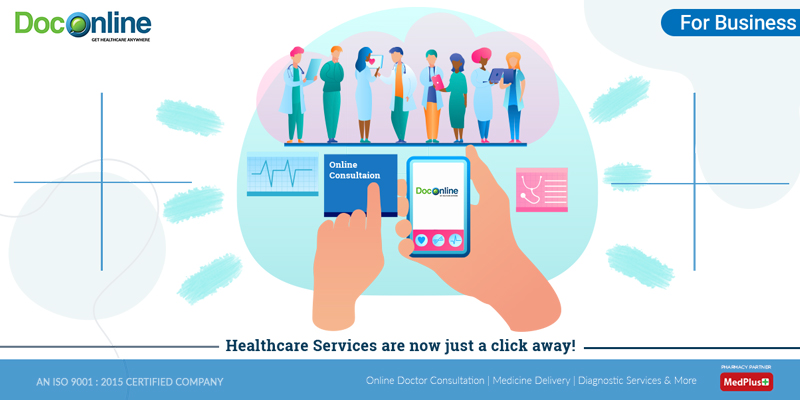Comprehending the Price Savings of Subscription Based Healthcare for Families
Comprehending the Price Savings of Subscription Based Healthcare for Families
Blog Article
Comprehending the Cost-Effectiveness of Subscription-Based Health Care Designs
As the medical care landscape progresses, subscription-based versions arise as an engaging choice, assuring to redefine exactly how individuals take care of medical costs. Reviewing these designs' cost-effectiveness necessitates a nuanced comparison with standard insurance policy, thinking about both economic ramifications and individual fulfillment. While they use transparency and predictability in costs, questions remain concerning their capability to meet diverse health care needs, specifically for specialized treatments. The perspectives of doctor even more complicate this formula, presenting a complex obstacle. What does the future hold for these designs, and can they absolutely deliver on their guarantee of obtainable, cost effective care?
Introduction of Subscription-Based Versions
Subscription-based health care designs, in some cases referred to as direct main care or attendant medication, are increasingly acquiring interest as a prospective remedy to ineffectiveness within traditional medical care systems. These designs run on the concept of offering people straight accessibility to health care companies through a month-to-month or yearly charge, bypassing the need for typical insurance coverage devices. This plan intends to streamline patient-provider interactions by minimizing management problems, which frequently prevent personalized and timely treatment.
At the core of subscription-based designs is the focus on an extra personalized client experience. People take advantage of enhanced accessibility to their physicians, usually consisting of next-day or same-day consultations, expanded consultation times, and direct communication channels such as phone or video telephone calls. This model promotes a positive strategy to medical care, where service providers and clients can collaboratively focus on preventative care and chronic disease administration.

Price Contrast With Traditional Insurance

One of the primary financial advantages of registration models is transparency in prices. On the other hand, typical insurance might be more helpful for people calling for specialized treatment or expensive treatments not covered under a subscription version, as they benefit from the more comprehensive insurance coverage network and cost-sharing systems.
Nevertheless, cost-effectiveness is context-dependent. While membership versions may supply cost savings for those mainly needing health care, individuals with chronic conditions or specialized medical care requirements might discover standard insurance extra comprehensive. Examining particular healthcare demands and potential usage is critical in identifying the most cost-effective choice for people.
Effect On Patient Complete Satisfaction
Patient complete satisfaction within subscription-based healthcare designs typically mirrors a significant enhancement over standard insurance policy systems. Unlike typical systems, where clients could experience delays in obtaining treatment, subscription-based versions make certain even more timely and direct communications with health care service providers.
In addition, the openness in prices related to subscription-based health care reduces the common aggravations related to unanticipated charges and complex payment procedures seen in conventional insurance (subscription based healthcare). Clients value knowing the precise economic commitment upfront, bring about boosted count on and self-confidence in their medical care management
Additionally, the emphasis on preventative treatment and wellness in subscription versions adds to boosted health and wellness outcomes, additionally enhancing person fulfillment. By focusing on ongoing wellness upkeep instead of anecdotal treatment, people experience an even more continual and all natural medical care journey.
Moreover, the enhanced provider-patient partnership cultivated in these models, characterized by more time invested per client and customized focus, plays a critical role in elevating patient satisfaction degrees, as clients really feel genuinely looked after and comprehended.
Company Experiences and point of views
From the supplier's viewpoint, subscription-based medical care models supply a transformative method to delivering clinical solutions. These designs emphasize a preventative and positive medical care technique, allowing companies to concentrate on extensive patient treatment without the restraints of standard fee-for-service arrangements (subscription based healthcare). This change in focus often causes boosted person outcomes and boosted supplier contentment, as medical care specialists can designate more time and sources to client engagement and customized treatment strategies
Furthermore, registration designs facilitate predictable income streams, which enhance financial stability for health care carriers. This predictability permits enhanced resource preparation and allocation, contributing to a much more reliable health care distribution system. Carriers can buy personnel training, technology, and facilities improvements, thereby improving the top quality of treatment supplied.
Nonetheless, the transition to subscription-based designs is not without obstacles. Regardless of these difficulties, lots of carriers locate that the advantages of raised person interaction and structured procedures exceed the initial obstacles, making subscription-based designs an attractive option.
Future Prospects and Obstacles

A key obstacle is governing compliance, as membership models need to comply with progressing healthcare plans and insurance policy requirements. This demands continuous adaptation and development to guarantee positioning with legal standards. Additionally, integrating these versions into existing healthcare frameworks can like this be intricate, calling for significant financial investments in innovation and training.
There is additionally the possible risk of creating injustices in medical care access, as membership models might prefer those who can manage them, leaving at risk populations underserved. Resolving this calls for thoughtful consideration of rates methods and subsidy sites systems to ensure inclusivity.
Conclusion
Subscription-based medical care models present a feasible alternative to typical insurance coverage by supplying economic predictability and openness, especially benefiting people with chronic problems or constant healthcare requirements. The cost-effectiveness of these models is contingent upon specific medical care usage patterns and scenarios. While they might enhance patient satisfaction and improve budgeting, difficulties stay in attending to specialized care needs. Future considerations include balancing extensive coverage with price and integrating these designs within the more comprehensive medical care system for optimal results.
Subscription-based healthcare designs, sometimes referred to as straight key treatment or concierge medication, are increasingly getting attention as a prospective remedy to inefficiencies within traditional medical care systems. Unlike typical systems, where people may experience hold-ups in getting treatment, subscription-based models make sure even more prompt and direct communications with health care suppliers.
These designs highlight a proactive and preventative healthcare strategy, permitting carriers to concentrate on comprehensive person treatment without the constraints of standard fee-for-service arrangements. As these designs proceed to obtain traction, they why not check here supply the possible to transform patient access to care, enhance solution shipment, and enhance healthcare investing.Subscription-based healthcare models present a sensible choice to conventional insurance policy by providing economic predictability and openness, specifically profiting people with persistent problems or regular healthcare needs.
Report this page